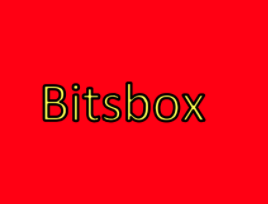
Bitsbox

Overview
Bitsbox is a learning system that teaches real coding. No coding experience necessary!! This highly engaging site may be used to quickly teach students how to create an app using a modified javascript computer language in an Hour of Code style format. From there students may progress to writing original apps that may be accessed on phones, via QR codes, or other devices.
There is no cost for this site, but they do offer themed books at a low cost filled with app projects for students to work on if desired. This activity may be introduced in just a few short minutes, however, student will need about an hour to complete the full activity.
Learning Objectives
Students will:
- Be able to write a computer program to create a game that may be shared and played by others.
Vocabulary
Vocabulary Words:
- Parentheses: Parentheses look like this ()
- Commas: Commas look like this ,
- Apostrophes: An apostrophe looks like this '
- Curly brackets: Curly brackets look like this {}
Pre-planning
To prepare for this lesson:
- Read the GrownUp Guide at Bitsbox. It only takes a few minutes!
- Build a few apps in the Bitsbox site you will use with your students at and note how the tutorials will help teach and guide students along the way.
- Check out the Bitsbox Blog for an explanation of some of the coding basics to help you understand the code. This will give you a cheat sheet that explains what each line of code does.
- Take a minute to ensure the website is not blocked by the school filters by loading on your devices at school. If the site is blocked speak to your IT coordinator to get the following sites unblocked:
- bitsbox.com
- bitsbox.io
- firebase.com
- firebaseio.com
- googleapis.com
- gstatic.com
- codepops.com
Accommodations
See the Accommodations Page and Charts on the 21things4students website in the Teacher Resources.
Steps
Directions for this activity:
-
Introduce Bitsbox and explain that this site will teach them how to create their own apps that others can play.
-
Model the first few steps of the Hour of Code activity pointing out that the tutorial helps to guide them, and that syntax must be exact. In other words, if they type in capitals or lowercase, the students must do the same. If they use parentheses, so must the students.
-
Warn students that parentheses and brackets must be used in pairs and that this is a common mistake.
-
Students begin the Hour of Code activity.
Assessment Options
Different options for assessing the students:
- Observations
- Check for understanding
- Students may turn in the link or QR code for their app or simply take a screenshot of the completed project.
MITECS COMPETENCIES & ISTE STANDARDS
MITECS: Michigan adopted the "ISTE Standards for Students" called MITECS (Michigan Integrated Technology Competencies for Students) in 2018.
Computational Thinker
5a. Students formulate problem definitions suited for technology-assisted methods such as data analysis, abstract models and algorithmic thinking in exploring and finding solutions.
5c. Students break problems into component parts, extract key information, and develop descriptive models to understand complex systems or facilitate problem-solving.
5d. Students understand how automation works and use algorithmic thinking to develop a sequence of steps to create and test automated solutions.
Devices and Resources
Device: PC, Chromebook, Mac, iPad (All, however, it is highly recommended that a device that has a keyboard is used.)
Browser: Chrome, Safari, Firefox, Edge, ALL
Websites:
Bitsbox
CONTENT AREA RESOURCES
ELA
-
RI.3 Students describe what will happen in a program if it is executed.
-
SL.5 Create a digital story
Math
4.OA.5 Students create a drawing that repeats patterns
Social Studies
4.H3.0.9 Create an interactive timeline of a historical event.
Credits
This task card was created by Patricia Paxton, Armada Area Schools, February 2018. Updated February 2024.


